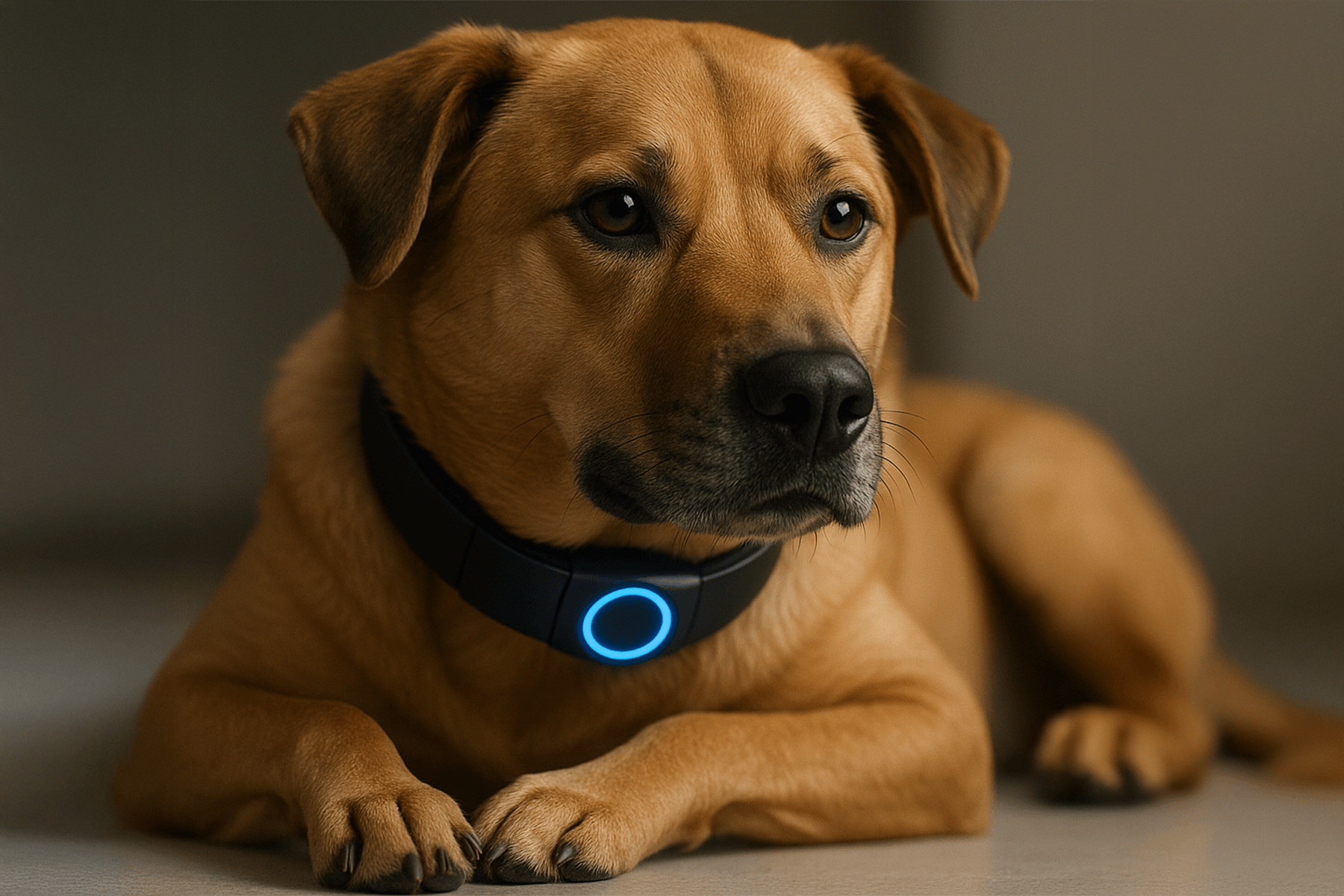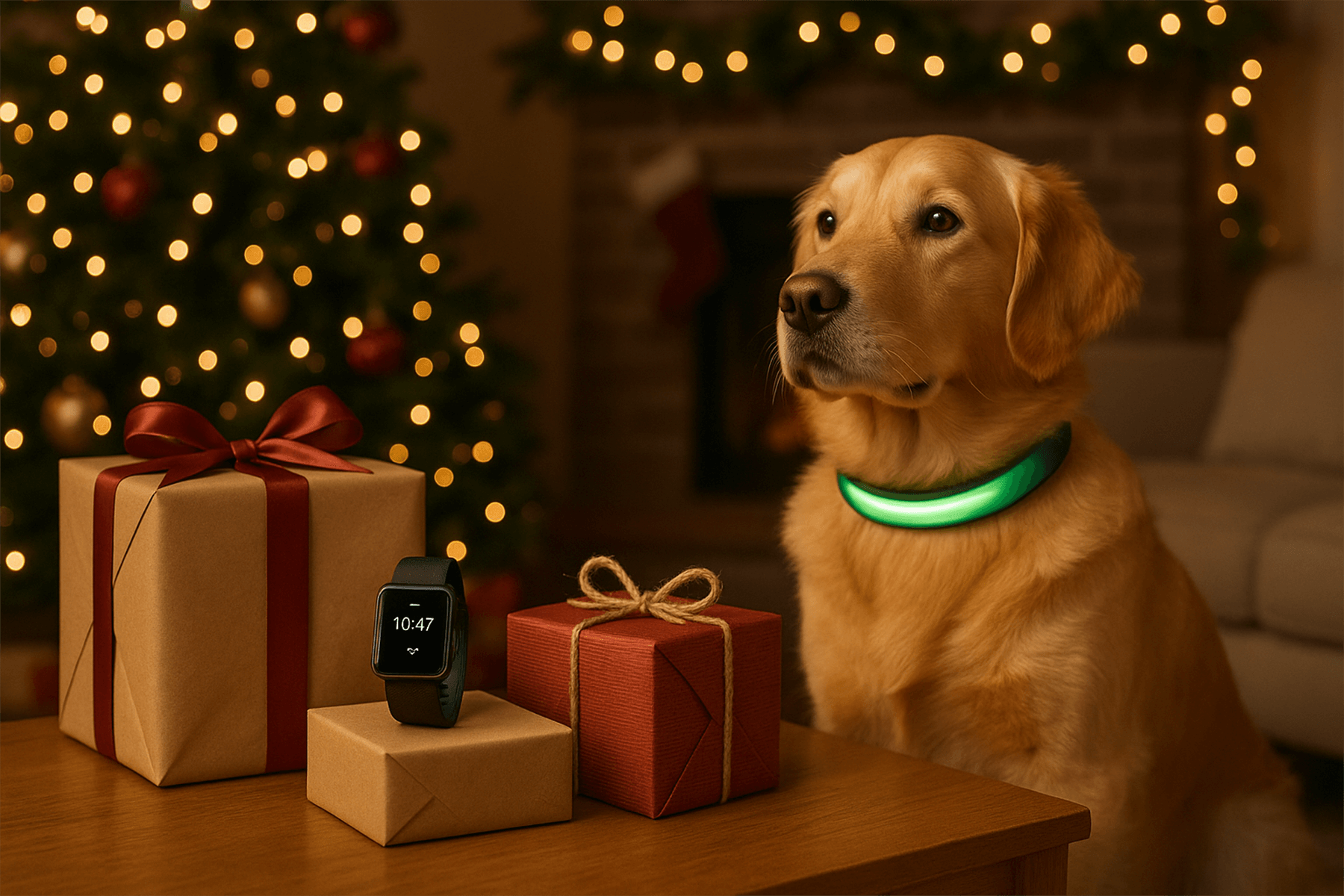Pet wearables are entering a new phase. Early devices focused on location and step counts, but today’s models aim to interpret what pets feel. From heart-rate sensors to motion-based mood detection, AI is helping translate subtle behaviors into health and emotional insights. For owners and veterinarians alike, the shift from where a pet is to how it’s doing marks a quiet revolution in animal care.
How AI Bio-Sensors Are Changing Pet Tech
Traditional GPS collars relied on accelerometers and geofencing. The next generation adds sensors that detect heart rate, respiration, temperature, and even posture. Using machine learning, these wearables build a baseline for each animal’s normal routine and flag deviations that may signal stress or illness. Some can alert owners when a dog’s recovery time lengthens after exercise or when nightly rest becomes restless.
Researchers are exploring how heart-rate variability (HRV) and micro-movements correlate with canine anxiety and feline discomfort. A 2024 preprint, “Quantified Canine: Inferring Dog Personality From Wearables,” showed early evidence that sensor fusion could predict behavioral tendencies from continuous data. While these tools can’t “read” emotions in a human sense, they offer a new layer of context for understanding pets’ daily rhythms.
Real Devices Leading the Trend
Several companies are pushing the frontier of AI-driven pet monitoring:
- PetPace integrates pulse, respiration, and temperature sensors into a smart collar, streaming data to a veterinary cloud dashboard.
- FitBark and Tractive combine activity and sleep tracking with wellness scoring, useful for aging dogs or those in rehabilitation.
- Invoxia adds biometric analysis similar to human fitness wearables, offering early detection of abnormal breathing or lethargy.
Emerging startups such as PetSpot AI are experimenting with emotion detection through sound, micro-movements, and AI pattern recognition. Veterinary clinics are beginning to test whether these datasets can augment telehealth check-ins, particularly for chronic conditions or recovery monitoring.
What Pet Owners Are Asking
Search trends reveal that consumers want to know more than which collar has the best battery life. The top questions include:
- Can wearables really track my pet’s mood? Current models approximate emotional state from physiological and behavioral cues; they identify patterns, not feelings.
- Which sensors matter most? Accelerometers and HRV sensors provide the most actionable data today. Temperature and posture tracking add context for illness or anxiety.
- How accurate are these readings? Accuracy depends on fur density, collar fit, and calibration. Devices are improving, but false positives remain possible.
- How should I use the data? Treat trends as early signals. Significant deviations—sleep loss, reduced play, persistent scratching—should prompt a conversation with a veterinarian.
Market Growth and Innovation Pace
According to Grand View Research, the global pet-wearable market reached USD 2.7 billion in 2023 and is projected to exceed USD 6.8 billion by 2030. Health-monitoring applications, including bio-sensors and AI analytics, represent the fastest-growing segment. Other forecasts expect the market to top USD 11 billion by 2032 as sensor accuracy improves and veterinary data-sharing becomes mainstream.
Still, manufacturers face challenges. Power management, cost of advanced components, and interpreting data for non-human physiology remain hurdles. As with early human fitness trackers, the devices will mature as algorithms learn from larger, more diverse datasets.
Key Takeaways
- Next-gen pet wearables add bio-sensors and AI analytics to interpret behavior and health trends.
- Owners use these insights to spot early signs of stress, illness, or recovery issues before they escalate.
- Credible brands pair data dashboards with veterinary guidance for safer, evidence-based use.
What This Means for You
For pet owners, the benefit is awareness. Instead of wondering if a dog is anxious or a cat is under-active, trend data offers context. Over time, these patterns support better routines, more informed vet visits, and peace of mind. The technology is still young, but its promise lies in blending affection with analytics—giving pets a digital voice that owners can finally interpret.
FAQ
- Can AI collars really detect mood or stress?
They infer probable stress states from patterns in activity, sleep, heart-rate variability, and behaviors like scratching or pacing. Treat results as early signals, not clinical diagnoses. - Which sensors matter most for meaningful insights?
Accelerometers and gyroscopes quantify movement and posture; heart-rate and HRV add context for stress or recovery; temperature and respiration can flag illness or overheating. - How long does it take to build a reliable baseline?
Plan on 2–4 weeks of consistent wear. The more varied your pet’s routine the device sees (rest days, play days, weather shifts), the better the anomaly detection. - How accurate are these readings on furry pets?
Accuracy depends on fit, fur density, sensor contact, and motion artifacts. Expect occasional false positives; focus on trends across several days, not single alerts. - Do these wearables work for cats as well as dogs?
Yes, but look for lightweight designs and secure fit. Cat activity patterns differ from dogs, so choose brands with cat-specific modes or validated feline data. - Will a wearable share data with my veterinarian?
Some brands offer vet portals or exportable reports. Always review privacy policies, opt-in settings, and whether your clinic supports the vendor’s dashboard. - What about battery life and waterproofing?
Advanced sensors draw more power than GPS-only models. Expect several days per charge. Most are water-resistant for rain and splashes; check ratings before swimming. - Are subscriptions required for the best features?
Often yes. Cloud analytics, historical trends, and vet-sharing features are commonly paywalled. Compare total cost of ownership, not just device price. - Can one account track multiple pets?
Many apps support multi-pet profiles with separate baselines. Ensure you assign the correct collar to each pet and sync regularly to avoid data mix-ups. - What should trigger a vet call versus a watch-and-wait?
Call your vet for sustained changes (e.g., multi-day activity drop, persistent restlessness, abnormal breathing) or any alert coinciding with visible symptoms like limping or appetite loss.


